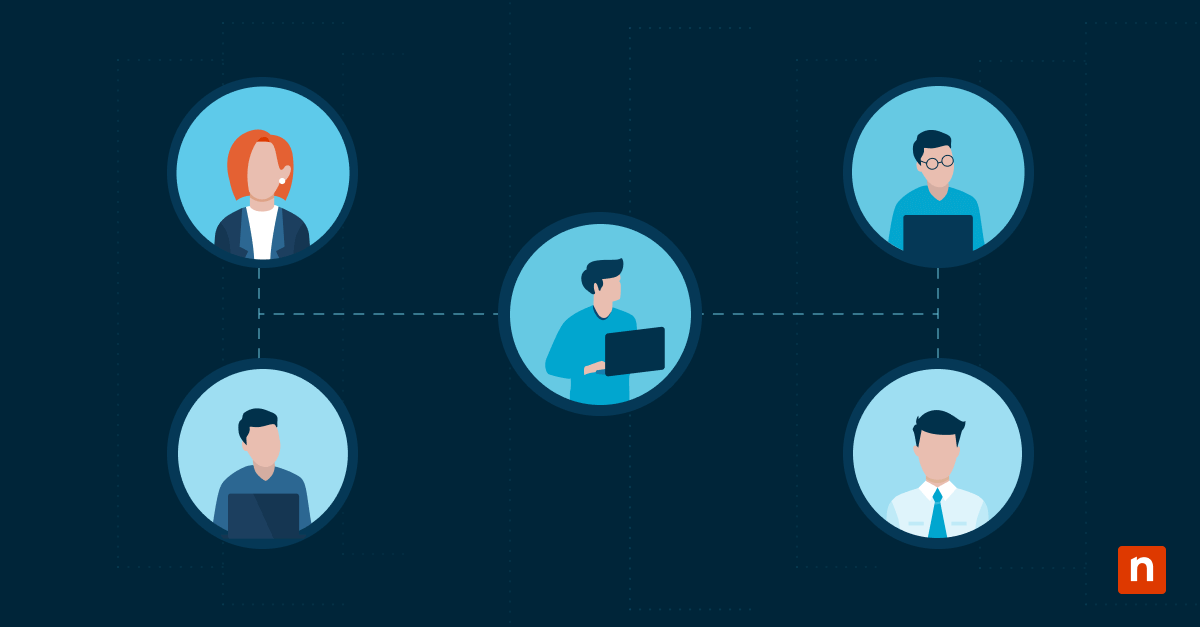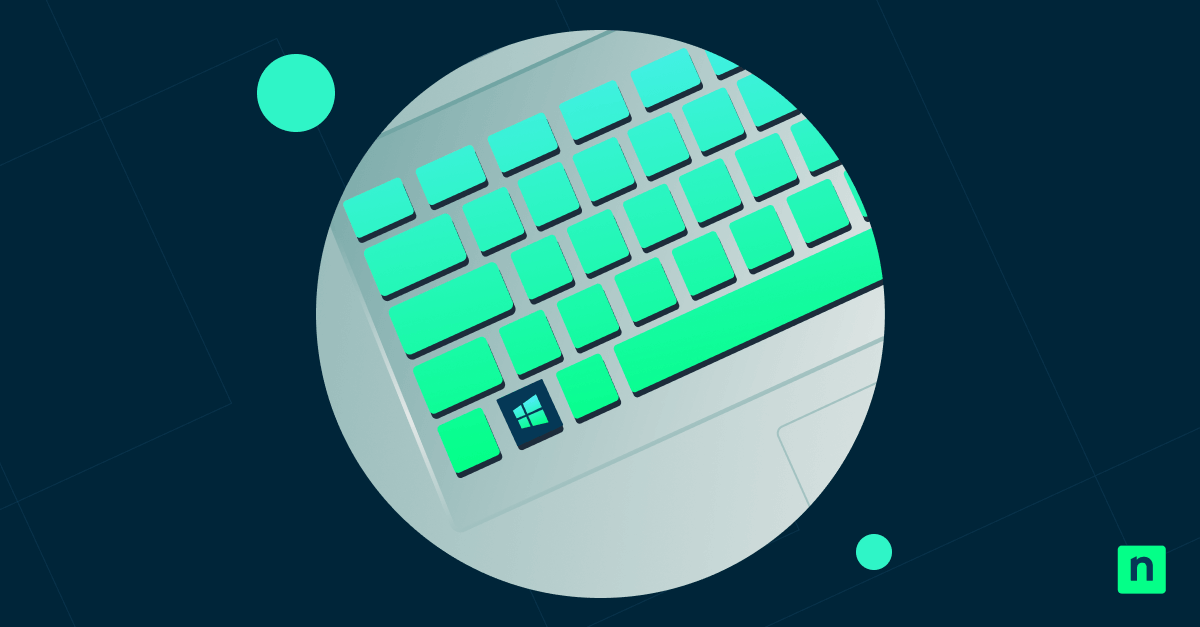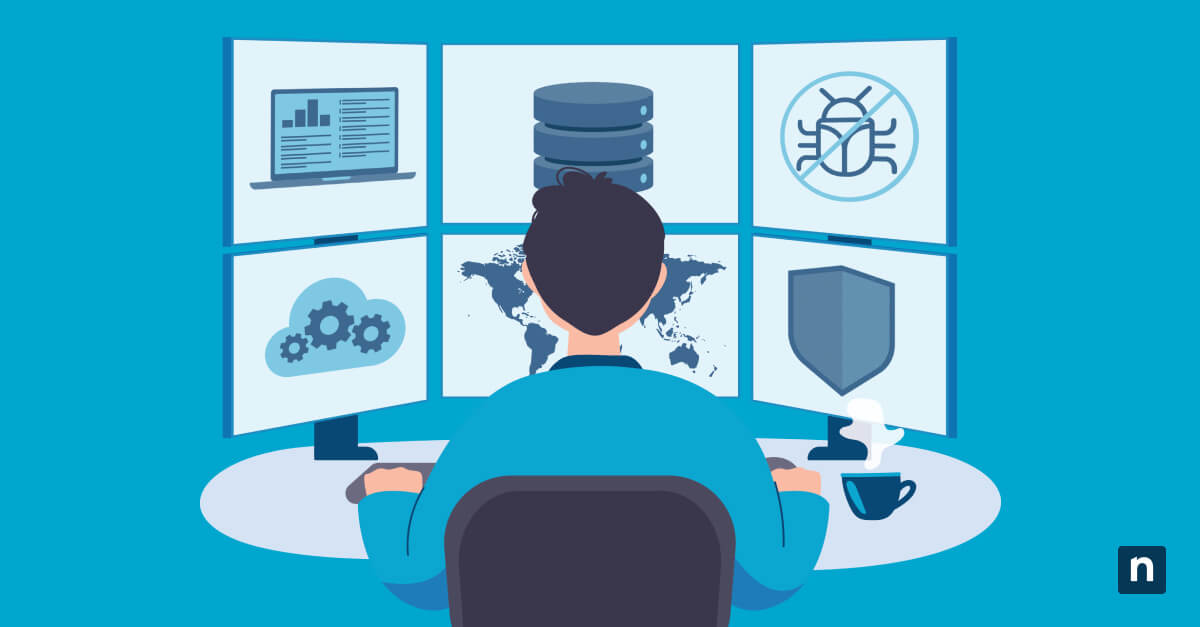Progressive Web Apps (PWAs) are a powerful Microsoft Edge feature that lets you transform your most frequently used websites into app-like experiences. Similar to web clips, PWAs eliminate the need to open a browser, granting your workforce push notifications and offline access and sparing you from long load times.
This article contains steps for installing and uninstalling a progressive web app, its key components, and common troubleshooting issues.
How to install a PWA using Microsoft Edge
Method 1: Installing a PWA from the address bar
- Open the Microsoft Edge app.
- Go to a website that supports PWAs (e.g., Pinterest, Uber, Twitter).
- To know if a site can be used as a PWA:
- Go to the website of your choice.
- Open Developer Tools by pressing F12 or right-clicking on the page and selecting Inspect.
- Navigate to the Applications tab. To see it, click on the double-arrow sign (>>).
- On the left-hand sidebar, select Service Workers.
- If you see any listed, the site has progressive web app support.
- To know if a site can be used as a PWA:
- Click on the ‘+’ install icon in the address bar.
- Confirm the installation in the pop-up window.
- Choose which settings you want to allow.
Method 2: Installing a PWA from the Edge menu
- Open the Microsoft Edge app.
- Go to a website that supports PWAs (e.g., Pinterest, Uber, Twitter).
- To know if a site can be used as a PWA:
- Go to the website of your choice.
- Open Developer Tools by pressing F12 or right-clicking on the page and selecting Inspect.
- Navigate to the Applications tab. To see it, click on the double-arrow sign (>>).
- On the left-hand sidebar, select Service Workers.
- If you see any listed, the site has progressive web app support.
- To know if a site can be used as a PWA:
- Press Alt + F to open Settings & more.
- Select Apps > Install this site as an app.
- Confirm the installation in the pop-up window.
- Choose which settings you want to allow.
Managing installed PWAs
Opening a PWA
Launch progressive web apps from the Start Menu or pin them to your taskbar for easy access. Note, however, that PWAs won’t display a specific file location because they run with the browser they were installed with.
🛑| Control which apps utilize your system’s resources first to optimize your process. Read this guide on how to manage Windows startup programs.
Uninstalling a PWA
Using Microsoft Edge
Here are the steps to uninstall a PWA in Microsoft Edge:
- Open the Microsoft Edge app.
- Press Alt + F to open Settings & more.
- Select Apps > View apps.
- Right-click on the app you want to delete.
- Choose Manage app.
- Click on Uninstall.
- Confirm the uninstall in the pop-up window.
Using Start Menu
- Press Win + S and search for the PWA.
- Right-click on the app you want to delete.
- Choose Uninstall.
- Confirm your choice in the pop-up window.
Alternative methods
Microsoft Edge Canary and Microsoft Edge Beta offer the latest features and tech updates that have yet to hit the official browser. The former boasts higher update frequency but lacks stability, while the latter gets patched every six weeks for more reliable performance.
Either one can give your users access to PWAs, and lets you adapt and test new streamlining features before they are released on the main browser.
FAQs
Can I install a PWA from any website?
No, not all websites can be downloaded as progressive web apps. A website needs to have a JSON manifest that contains its metadata, be served over HTTPS, and run on multiple devices.
Does a PWA work offline?
Yes, PWAs work offline through service workers, which cache assets that can be used without the Internet.
How do I update a PWA?
To get your PWA up-to-date, clear its cache and reload the app. Here’s how:
- Launch your PWA in your browser.
- Press F12 or Right-click > Inspect.
- Go to the Applications tab.
- Select Service workers in the left-hand pane.
- Click on Update, or Unregister if you want to completely replace your PWA’s service worker.
- Reload the page.
Can I pin a PWA to the taskbar?
Yes, you can pin a PWA to your taskbar. To do this, simply look up the app using Windows Search, right-click on it, then select Pin to taskbar.
Troubleshooting & common issues
Progressive web apps combine the best parts of web apps and native software, but also come with their own set of complications. Here are the ways to fix the most common ones:
Install option not appearing
- Check the site’s address bar to see if it’s served over HTTPS.
- Ensure the web app manifest is properly configured with essential properties (e.g., name, short_name, start_url, display, and icons).
- Confirm your browser’s compatibility with PWAs.
PWA not opening properly
Clear your browser’s cache and check for any updates. You should also see if your browser’s permissions aren’t interfering with your PWA’s performance. Otherwise, a reinstall may be needed.
Shortcut missing after installation
Certain browsers handle PWA shortcuts differently. If you don’t see a shortcut for your progressive web app, follow these instructions:
- Open File Explorer (Win + E).
- Navigate to the following path:
C:\Users\%USERNAME%\AppData\Local\Microsoft\Edge\User Data\Default\Web Applications
- Look for the “_crx” folder corresponding to your installed PWA.
- Right-click on the .exe file and choose Create desktop shortcut.
Alternatively, you can also pin a progressive web app to your taskbar. To do this, simply search for the app using Windows Search, right-click on it, then select Pin to taskbar. Doing so lets you easily access the PWA, especially when there aren’t clear ways to create a desktop shortcut.
Use progressive web apps to make your workflow seamless
PWAs let your organization enjoy a lightweight app experience that makes accessing important websites faster and more accessible.
Creating a progressive web app on Microsoft Edge is as simple as going to a site that supports it, finding the address bar’s install button, and confirming your choice. Management is intuitive and only involves a few clicks in Microsoft Edge. Lastly, the alternative ease of PWAs shines the most when you consider their potential for workplace automation.
Quick-Start Guide
NinjaOne does support Progressive Web Apps (PWAs) through its Windows Package Manager (WinGet) integration. However, there are a few important details to note:
- WinGet is supported on Windows 10 (version 2004 or higher) and Windows 11
- NinjaOne currently offers over 6,253 software products through WinGet
- The integration is in early access and primarily supports system-wide installers
- Per-user application installations are not currently supported
To install PWAs on Microsoft Edge in Windows 10 using NinjaOne:
- Enable WinGet in the NinjaOne administration
- Add the specific PWA to your software policy
- Configure the software for patch management
Keep in mind that there are some limitations:
- Not all products in the WinGet repository will be available
- Only system-wide installations are supported
- Some PWAs may require additional configuration








